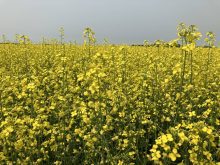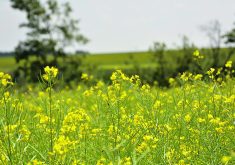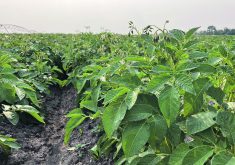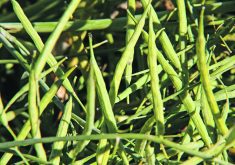SASKATOON — Statistics Canada’s model-based production estimates are coming under scrutiny, but the agency is standing by its methodology.
Many in the grain industry feel that the August estimate, which is based on the satellite-derived normalized difference vegetation index (NDVI), is significantly underestimating the size of this year’s crop.
Peter Watts, managing director of the Canadian Malting Barley Technical Centre, said the forecast for 8.23 million tonnes of barley production is out of whack with reality.
Read Also

Can folklore predict winter weather?
I thought it might be fun to take a closer look at some weather folklore and try to dissect them a little bit to see if they are or can be used to predict future weather.
“Everybody feels that number is too low,” he said.
Watts said the model doesn’t appear to be properly accounting for the yield boost delivered by the widespread late-July rain.
He thinks nine million tonnes is a more reasonable production number, and some in the industry think it will be much bigger than that.
A similar story was told at the recently held 2025 Pulse and Special Crops Convention.
LeftField Commodity Research analyst Chuck Penner is forecasting 3.75 million tonnes of pea production based on what he deemed a very conservative yield estimate of 40 bushels per acre.
That compares to Statistics Canada’s latest guess of 3.56 million tonnes.
Jay Paskaruk, division head, North American sales and marketing, with AGT Foods, thinks lentil yields could match the 2013 record of 1,850 pounds per acre.
That would result in 3.6 million tonnes of production, which is well above Statistics Canada’s estimate of 2.97 million tonnes.
Shri Madiwal, vice-president of operations and supply chain at the Port of Vancouver, said the port’s customers are telling him there will be 80 million tonnes of production of the crops that typically move through the port, compared to 70 million tonnes in a normal year.
The port anticipates moving 32 to 35 million tonnes of that grain, versus 30 million tonnes in a normal year.
“This year, we anticipate a bumper grain season,” he said.
John Seay, unit head of Statistics Canada’s crop reporting unit, has read media reports about the late-season rainresulting in record yields, but he still has faith in the model.
“We remain confident that the model is doing a good job of producing estimates of yield and production,” he said.
He noted that the agency’s NDVI maps picked up on the big increase in vegetative health between July and August, and the model adjusted yields accordingly.
As well, Canada’s yields for the big crops such as canola and spring wheat appear to be aligned with what the provinces are reporting.
Seay said there was plenty of second-guessing of Statistics Canada’s crop production estimates long before it switched to the model-based approach for the July and August forecasts, so this is nothing new.
The reason they switched was because internal research showed the models did as good a job or better than the July and August surveys were doing.
He also noted that the latest estimate was as of Aug. 31, so it is difficult to compare them to industry estimates as of the end of September because as more information becomes available, a lot can change. It is not an apples-to-apples comparison.
The next production estimate will be based on a survey of 27,200 farmers conducted in November.
There are no plans in the works to switch that November survey to a model-based forecast. The government and industry both want to keep it a survey.
It will be interesting to see how it compares to the August model-based estimate.
Seay said Statistics Canada is constantly tweaking the model.
“It’s not something that we developed and it’s set and it will never change,” he said.
“We’re always looking to improve that.”
For instance, the agency is trying to improve both the model- and survey-based estimates for special crops, which are hard to predict due to the small acres involved.
It is looking for other sources of data to incorporate into those forecasts.
In the meantime, Seay encourages farmers to participate in the upcoming November survey.
“Obviously a higher response rate can help us to improve upon the quality of those estimates, which benefit everybody,” he said.


















